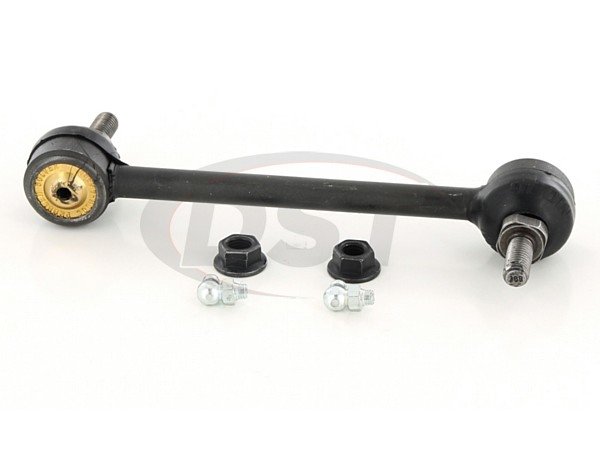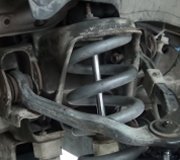There actually are different grease formulations, but it comes down to what the person ordering for the shop chooses. Some are less expensive in a 30-gallon barrel. Some are only available in a five-gallon pail. Those can be pumped into hand-held grease guns so each mechanic can fill his own when necessary. The small tubes are the most expensive way to buy grease, but it's the only practical way for a home owner to buy it. It comes down to which advertising or features you prefer.
Besides lubricating the joints, the grease fills voids so dirt and water won't enter. The cheaper greases are okay at lubricating, but the expensive ones are very thick and stringy. Those tend to stick to the parts better and the need to add more grease is not as frequent. With a high-quality grease, you can get away with greasing anti-sway bar links every 10,000 miles or more.
Years ago relubricating front tapered wheel bearings was a standard part of a front brake job. Those bearings were adjusted to have a very sight clearance between the rollers and race. To over-tighten those bearings would squeeze the grease out from between the rollers and race, and that would reduce the lubrication for the rollers. Shops needed to buy wheel bearing grease that would cling to the rollers, then we would use it for ball joints and tie rod ends too. To buy a second, less-expensive grease for those joints would cause confusion and require everyone to have two grease guns. Instead, we just put the better stuff in places it didn't have to be that good.
That wheel bearing grease is still available, but it's more than you need if you don't have wheel bearings to repack occasionally. Grease is most important when isolating parts that slide across each other. In ball-and-socket joints, the wear comes from the hammering action, and grease doesn't really do much for that. The grease just gets pushed out, then the two parts bang into each other. It's keeping the dirt and water out that grease is needed for most.
Keep in mind that many anti-sway bar links, and even ball joints and tie rod ends are sealed and there's no way to add grease. They need to withstand the same forces, but when they're sealed properly to keep dirt out, they don't wear out much faster than greaseable joints.
Sunday, July 16th, 2017 AT 10:00 PM



